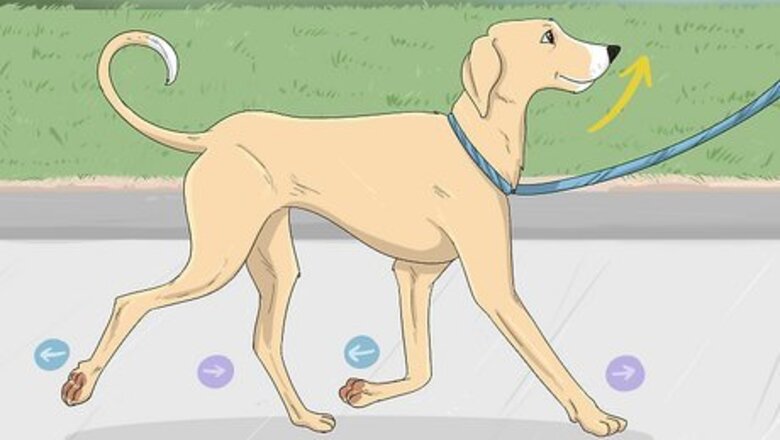
views
Training your Dog for Show
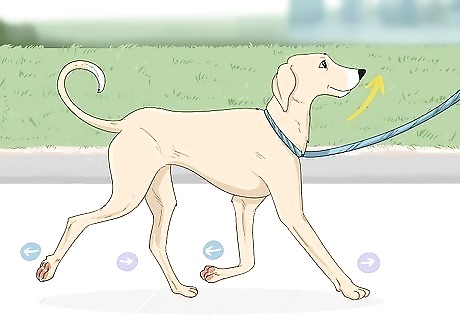
Practice gaiting. Gaiting is moving your dog in a way that allows the judge to see their movement and structure. The correct gait is usually a trot, with the dogs head up. A trotting dog’s right front leg and left back leg move forward at the same time, then the left front with the right back. Trotting is the correct pace because it shows the dog’s true structure the best. To start, use treats to lure your dog to follow you around without a lead. The dog should remain at your left side. Once the dog is comfortable wearing the collar and walking beside you, formal lead training can begin. Attach a show lead to the dog's collar, pick up the dog and carry it a short distance away from your home. Put it down and walk back toward your house at a speed that encourages the dog to trot, holding the other end of the lead. The dog should be happy to go toward home and follow you. Repeat this process, carrying the dog farther away from home each time. If your dog fights the lead, back away and offer it treats to come toward you.
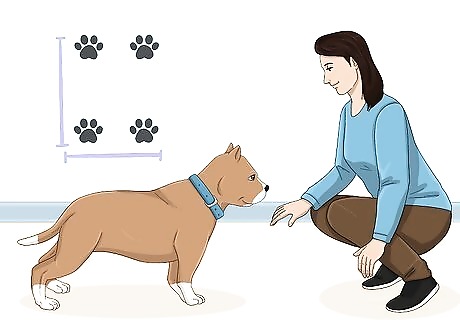
Teach your dog to “hand stack.” To succeed, all dogs must learn to "stack," or stand squarely and still. In hand stacking, you manually place each leg in position while standing or kneeling close to the dog. Dogs will have to stack several times during a show. Many people let dogs "free stack" most of the time, but hand stack right before the judge's examination. This ensures the best possible stance for the dog. The specific position your dog should be in will vary by breed. Consult the guidelines for your breed, available from the appropriate club. To train for hand stacking, keep a good-sized treat in your right hand. Keep it partially covered so the dog can only nibble on it as you adjust the positions of the dog's feet with your left hand. Adjust the dog's front legs first, moving them at the elbow. Then, keeping your left hand on the dog at all times, move to the back legs and adjust them at the hock. Never stack by touching the dog's feet, as this may cause it to shift its whole body. Repeat this until your dog is comfortable with the process. Finally, teach the dog to maintain that position. Pull the food away for a second and tell the dog to stay. If it holds the position, say "yes!" and give the dog a nibble of the food. If it doesn't, restack the dog and try again.
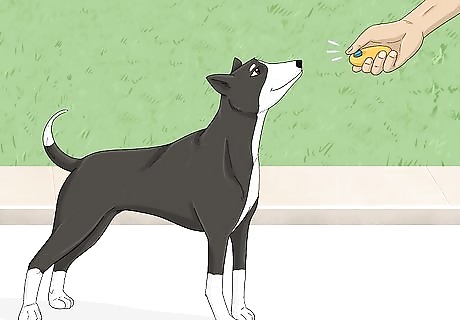
Teach your dog to "free stack." Free stacking is when your dog assumes the proper position on command, rather than with manual adjustment. This is most easily done with some training treats and clicker. To begin with, click and reward your dog whenever it stands. If it keeps standing, reward it again. Keep doing this until the dog offers the stand position spontaneously. Next teach “back up.” Step toward the dog and click and treat any shift of movement backward, which should result in the dogs back legs aligning. Repeat this process with the command, clicking and reward increasingly correct backing up behavior. Then, teach the dog to align its front legs with the command "step." To teach this command, step back and click and treat as soon as the dog moves a front foot forward. Once the dog does this easily, say “step” just before you prompt it. Repeat this until the dog aligns it's front feet on command. Finally, teach the command "stack." Click and treat every time the dog is in the correct position. Repeat if the dog holds that position. Eventually, you'll be able to just use the "stack" command without "back up" and "step."
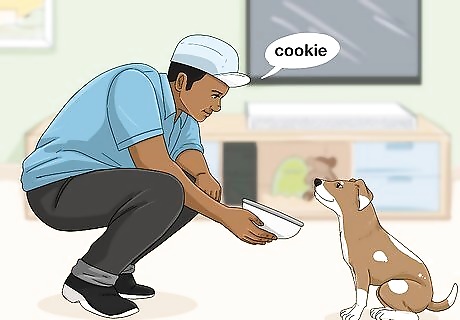
Bait train your dog. You want your dog to also look alert and happy when stacked. Most breeds should have their attention on the handler and the judge, and have their ears perked and their eyes on you. Training your dog to look at you is something you can begin the first time you feed the dog a meal. When you put the food bowl down, repeat the word “cookie" over and over. This repetition will teach the puppy to associate a food with that word. Later, use this command to focus your dog's attention on you while offering it treats from your hand when it is in a stacked position. This causes the dog stretch its neck upward to look at you. This pose shows the dogs outline and balance to the judge.
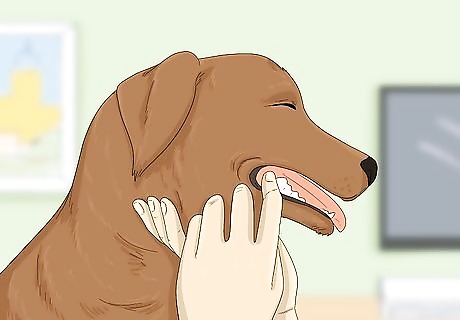
Teach the dog tolerate examination. In a dog show, judges will physically examine a dog, touching its body and mouth. A successful show dog will need to tolerate this without complaint. A good first step in getting your dog accustomed to this is to to touch the dog all over its body daily, including inside its mouth. If you start this at a young age, your dog will quickly grow accustomed to it. Next, begin giving your dog regular inspections that approximate those of a judge. Closely examine the dog's teeth. For males, touch the testicles. Do this on both a table and the floor, if your dog is smaller in size. While small dogs are usually inspected on a table, some judges will begin inspection while the dog is still on the ground. Finally, when the dog is comfortable with your inspections, bring in a second person and ask ask them to do the same. This way, your dog will get comfortable with inspection by strangers.
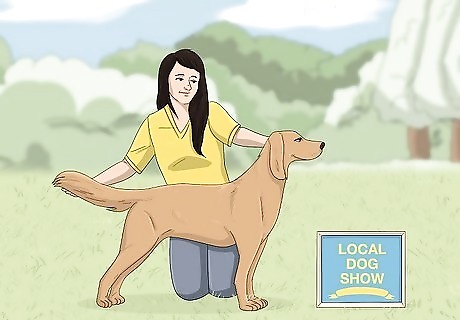
Start showing for local clubs. Before you try taking your dog to a major club show, try showing your dog with a small, local club. This can be fun, and a good way to determine if your dog is ready for the "big leagues."
Getting Ready to Train
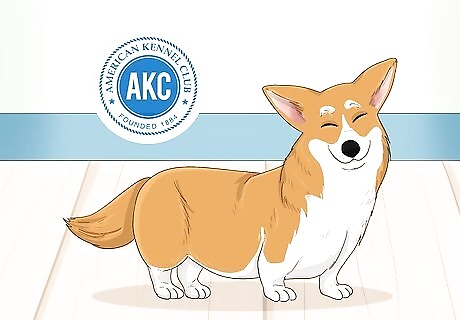
Make sure your dog is eligible to participate. Before you invest a lot of time and effort in training your dog, you will want to make certain your dog will be allowed to take part in dog shows. Only purebred dogs over six months old that are not spayed or neutered may take part in American Kennel Club (AKC) shows. That's because the purpose of these events is to judge whether your dog is good breeding stock. Your dog must also be registered as a purebred with the appropriate breed club and conform to all breed guidelines. If you got your dog from a breeder, they probably gave you the certification paperwork showing your dog is registered. If not, you'll need to contact the appropriate breed club. The AKC has an online directory you can use to contact the club. If your dog is spayed or neutered, there are other events you can take part in. The United Kennel Club (UKC) has an "altered" class that allows these dogs to compete. If your dog is not a purebred, it can compete in shows organized by mixed breed dog clubs.
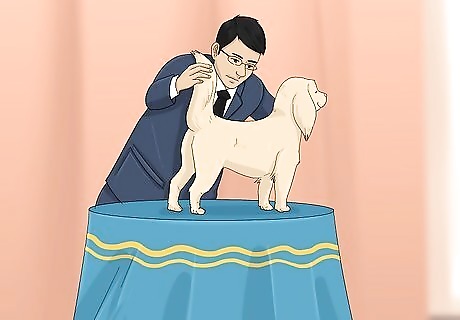
Attend some dog shows. The next step is to attend some dog shows to get a better sense of what it's all about. This will help you get a better sense of what judges are looking for, and what you can expect when you enter your dog. This is also a great way to get more information about the show process and preparing your dog. Visit the club table or tent to pick up information on entering your dog and training classes offered by the club.

Get the right lead. When your dog walks out into the ring, you'll need to have it on the right kind of leash or "lead." The sooner you get one of these, the sooner your dog can get comfortable with being on it. Go online or ask at your local pet store for one of these: For small dogs, you can use a Resco “all in one” style collar with lead. The Resco is a loop with a slider to keep it snug on the dog’s neck. For a medium sized dog, you can use a martingale lead. These leads close up enough to keep your dog's head from slipping out, but don't tighten around a dog's neck like a choke-chain. They also help to train your dog to keep its head held up high while showing judges their gait, and while stacking. The other commonly used lead is the chain and show lead. This is not as elegant as the martingale, but many handlers use them for larger, boxer breeds such as the Rottweiler. These also help your dog to keep its head held high, and to not run away in the ring.
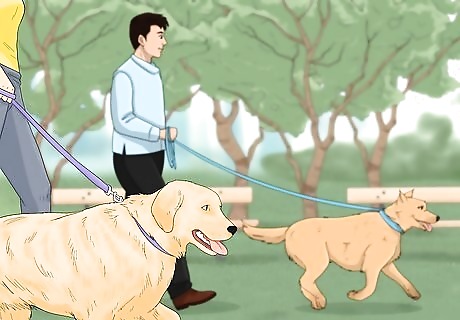
Enter your dog in a local ring raft class. These classes help you train your dog for a show. Although this is not necessary, it is recommended. Ringcraft classes can help you socialize your dog to other people and dogs. They can also help the dog learn to walk on a lead without being distracted by other dogs. These classes can also be a great source of information about shows and showing. They can be a good opportunity to meet other people involved in showing dogs. EXPERT TIP Sheri Williams Sheri Williams Certified Dog Trainer Sheri Williams is a Certified Dog Trainer and Behaviorist and the Owner of sheriwilliams.com, a business that specializes in teaching veterans how to turn their dogs into service dogs or emotional support animals to assist with PTSD. Based in the Los Angeles, California metro area, Sheri has over 20 years of dog training experience and also runs a general dog training practice specializing in rehabilitating dogs through positive reinforcement training techniques. She is certified by The Animal Behavior and Training Association. Sheri Williams Sheri Williams Certified Dog Trainer Become an expert through in-person training. To become skilled at dog training, it's helpful to do an in-person training program rather than learning online. Real-life experience working directly with the dogs and trainers is invaluable for picking up the nuances of dog behavior and training techniques.

















Comments
0 comment